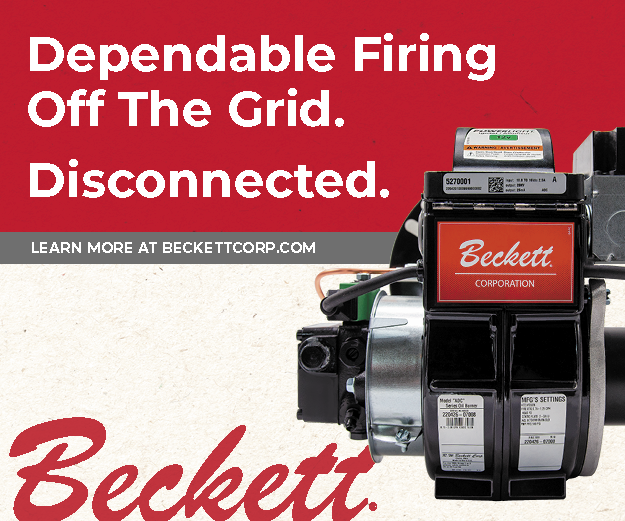
CETA Edge: Bolstering Economic Activity with Balance
By Diane M. Calabrese / Published December 2013

W
hat’s Ahead for the Pressure Washer Market?
Increasingly versatile equipment that does more with less water and fuel—and in less time—will continue to emerge from manufacturers. With innovative machines and ancillaries, distributors will extend their reach to new market niches and serve existing customers better. The foregoing, in a nugget, is what’s ahead. The interplay is expected and necessary to an industry growing in strength and breadth. Yet much of what’s ahead in 2014 can be summed up in a single word: Intensification.
The focus from environmental, health, and safety regulators on the cradle-to-grave path of industrial equipment, components, and compounds will extract ever-more time and investment from manufacturers and distributors. And the Cleaning Equipment Trade Association (CETA) is engaged for full participation in open comment periods on new rules that affect manufacturers and distributors.
CETA members can improve the feedback loop to regulators by being active in providing information about local experiences and being aware of regulatory initiatives that are likely to grow in scope. A look at some examples of what’s already in the works and likely to expand provides a good starting point for preparing for the future.
Let’s start with water. Use less water by not wasting water. That’s the overarching goal of participants in the WaterSense program that operates as a partnership under the umbrella of the U.S. Environmental Protection Agency. The WaterSense program has several types of partners, ranging from builders and certified irrigation professionals to manufacturers and retail and distributors.
By encouraging consumers to adopt products that have been certified by the WaterSense, the EPA aims to cut water use. Water-efficient appliances and fixtures easily slash water use by 30 percent over older and less-efficient models.
Obtaining a WaterSense certification and securing the right to use the logo is important to manufacturers and distributors selling directly to homeowners. For instance, companies that sell home irrigation systems are keen to signal the efficiency of their products with the certification.
Among the shared objectives of those participating in the WaterSense program is encouraging innovation in manufacturing. Manufacturers of pressure washers consider innovative efforts a pillar of their businesses and extracting the most from water has been a goal since the inception of the industry. But documenting savings may one day soon become as important to sales as an excellent machine.
In fact, such documentation from a manufacturer may provide a distributor with a way to boost a contractor’s business. Most homeowners do not think about the amount of water that flows from their garden hose. They may do a bit of outdoor cleaning using the hose, cleaning of a deck, siding, or a driveway that could be better done by a contractor using the power and efficiency of a pressure washer.
The current regulatory climate is one in which documentation and metrics matter a lot. In that context, it is reasonable to predict that manufacturers and distributors of pressure washers will want to explore a certification that telegraphs the efficiency of their products in the use of water.
Irrespective of how efficient a machine or a component is, eventually it will wear out. What happens then? Disposal in a responsible manner is what regulators promote. (No one wants to see machines fill dumps.)
The Responsible Appliance Disposal Program (RAD), for which EPA serves as a technical clearing house, promulgates best practices for getting rid of appliances. Recovery and reclamation or destruction of refrigerant is one dimension. Recovery and destruction of foam is another. Metal, plastic, and glass recycling and recovery and proper disposal of PCBs, mercury, and oil fill out the picture.
EPA encourages manufacturers and retailers and others (e.g., local governments, organizations, universities) to join RAD because documenting the components that receive proper disposal enables an accounting to be made of how emissions are being reduced voluntarily. Of course, the unit being recycled when replaced with a current, energy-efficient model can trim energy use for an owner by half or more.
States are leading the way in determining the types of devices and equipment that must have energy efficiency ratings. California law encompasses the longest list of equipment. Federal law covers machines in wide use, such as dryers, washers, burners, and furnaces. And some states have unique entries on their lists. My own state (Maryland) includes traffic signals, which it has been replacing with LED versions.
RAD is a good indicator of the direction in which all is heading. Manufacturers that can assist distributors with the most environmentally friendly recycling of old equipment will strengthen interaction.
One of the newer partnerships involving EPA, the RAD joins a long list of such links. Among the other partnerships are the Green Suppliers Network (to which some industry members already belong) and Energy Star.
Compliance with regulatory obligations has long been a part of doing business for manufacturers and distributors. Now, regulators are encouraging an extra step toward what EPA labels “sustainability.” The idea is to use the resources of EPA and other regulating bodies to go beyond regulatory obligations or, in other words, to make the conservation and preservation of resources part of every innovative endeavor.
The website portals at EPA.gov are subdivided by major activities, such as retail industry (www.epa.gov/retailindustry) and further subdivided by subcategories within the industry. Retail activity encompasses new building, management of facilities, transportation logistics, and so on. Consult ‘facilities management’ in the retail portal to get a regulator’s eyes view of the many compliance issues that are being monitored. There are compliance resources for boilers; spill prevention; and for the trio of fats, oils, and grease.
The resources for compliance are excellent. They are also a very good reminder that there is little to nothing that goes unregulated as we approach 2014—a year when we already know there will be much more attention given to carbon and mercury.
Consider tritium, which a manufacturer’s plant or a distributor’s showroom might have on site in a seemingly innocuous way. Tritium, a radioactive isotope of hydrogen, is luminous and is used in EXIT signs. Now, to possess tritium, even in such signs, is to require a license from the Nuclear Regulatory Commission (directly or via the agreement with the state in which a company resides).
Handling of signs containing tritium is quite strict. Many luminous devices that rely on tritium and are not deemed of any necessity are banned in the United States. (Obviously, no one wants a radioactive isotope that could be used in a thermonuclear bomb to be in wide use.)
The balance between safety and risk is a tricky one to maintain for everyone. For manufacturers and distributors trying to carry on and provide excellent products and services to customers who will then go out and be engaged in the community—and another circle of what could be risk—there will always be some risk.
Perhaps more than at any time in the past, involvement with regulators will be important to ensure that rules are constructed in a way that maximizes the understanding of concerns and endeavors of manufacturers and distributors. Products cannot be made, sold, or used without some change to the environment.
It’s about more than keeping our industry strong. It’s about bolstering economic activity everywhere…and tempering well-meaning intensity with balance.





